Reviving the Vivid rear shock family name, RockShox’s latest release sees the beefy air-sprung model get position-sensitive damping, according to the brand.
Its latest tech, dubbed TouchDown, enables the rear shock to ‘bypass’ the compression damping generated by the main piston’s movement in the first 10 per cent of its travel.
This ‘undamped’ portion of travel is claimed to improve off-the-top sensitivity, helping the bike absorb and smooth out rough, stuttery sections of trail.
Its new DebonAir spring uses increased air volumes to give a 'coil-like' feel, while retaining bottom-out resistance adjustability thanks to volume-reducer spacers.
Like the current range of Super Deluxe shocks, the new Vivid has adjustable hydraulic bottom out (HBO) to improve end-travel performance.
True to form, the Vivid is offered in Ultimate, Select , Select and basic models, but only the Vivid Ultimate and Ultimate DH are available to buy aftermarket. These retail for between £749/$699/€839 and £799/$729/€874.
Five things you need to know about the new RockShox Vivid shock
- TouchDown technology is claimed to reduce the effect of compression-damping forces in the first 10 per cent of its travel, in a bid to improve smoothness.
- It shares the adjustable hydraulic bottom-out system and shim stack with the Super Deluxe Coil.
- A high-volume air spring is claimed to give 'coil-like' performance.
- Aftermarket upgrades include an Ultimate-level reservoir for Select and lower models to increase adjustability, and eyelet bearings to reduce friction during compression.
- The new Vivid can be bought with pre-installed tunes for some popular bikes, including models from Canyon, Santa Cruz, Trek and others.
RockShox Vivid TouchDown damper tech explained

TouchDown’s aim is to reduce damper forces at the start of the shock’s stroke, essentially making it easier to compress in the first 10 per cent of its travel.
This should make the bike feel smoother and more supple over bumps because it’s more eager to compress.
In the below graph, RockShox compares a TouchDown damper to a ‘standard’ damper.
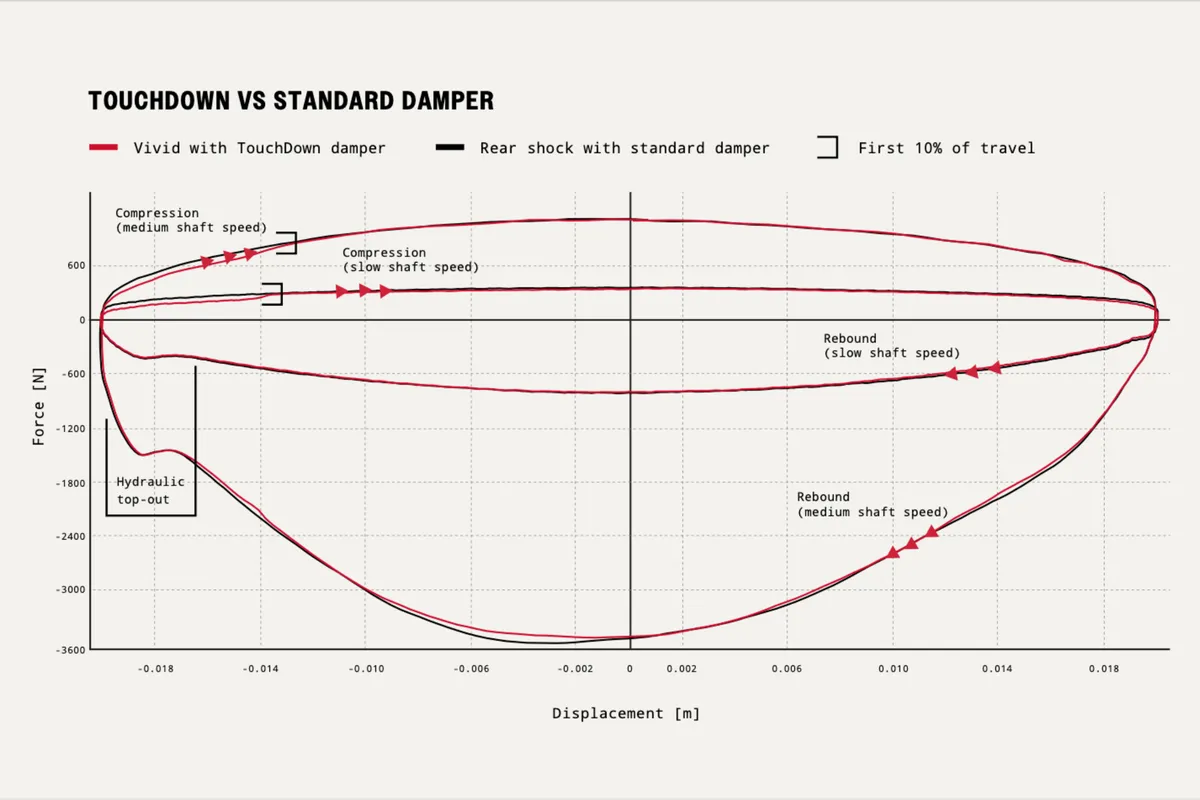
At the start of the shock’s compression stroke (in the top left-hand quadrant of the graph), you can see the red line is lower than the black line for both low and medium shaft speeds.
The red line represents the new Vivid, the black a ‘standard’ damper.
The Y axis represents the forces created by the damper during shock compression, and the rebound forces generated on the return stroke.
The closer to the zero point on the Y axis the line is, the less force is required to compress the shock.
The X axis represents displacement in metres.
The graph illustrates how less force is required to compress the shock as it moves up to the first 10 per cent of its travel.
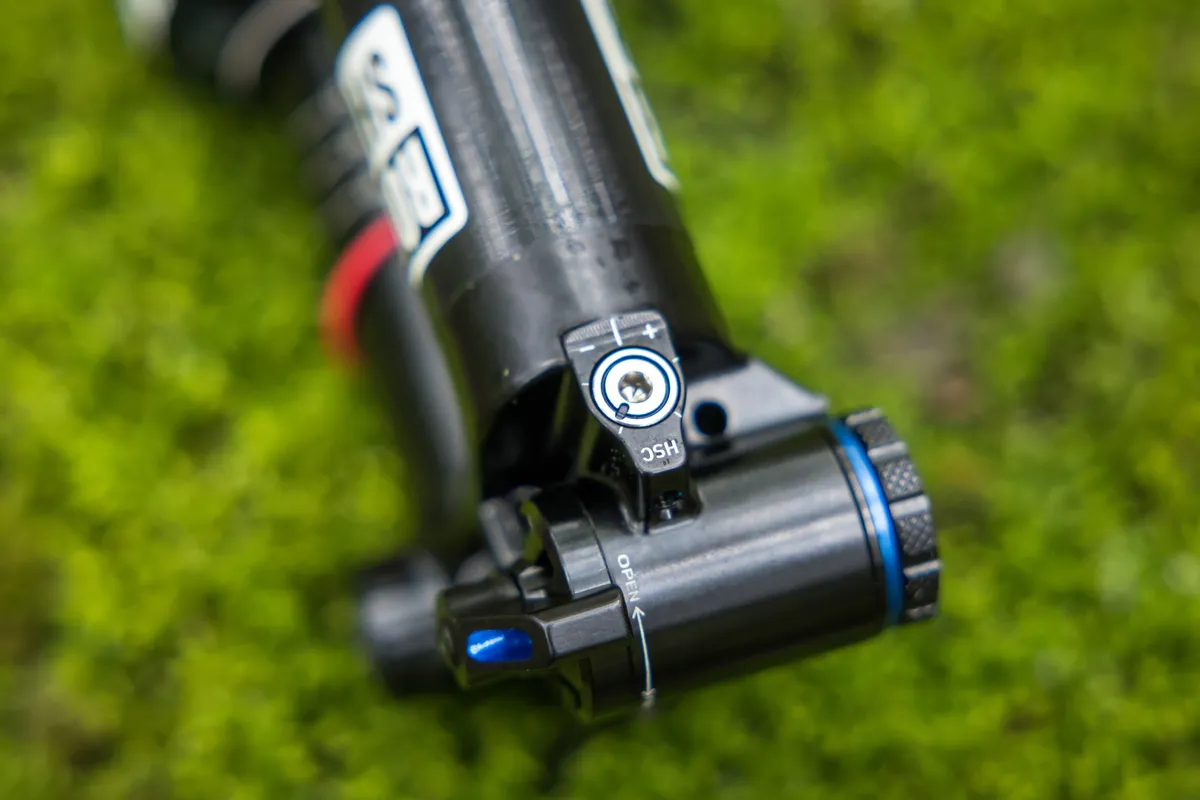
This should translate to a soft, smooth feeling on the trail.
Moving into the next 70 per cent of its stroke, it relies – like most shocks – on its compression damping to provide stability. Here, the two lines join back up.
Finally, in the last 20 per cent of its travel, the new Vivid has hydraulic bottom-out adjustment.
This increases compression damping in the last portion of its travel, helping the shock resist bottom outs.
RockShox claims these three phases of damping work seamlessly from one to the next, with no perceptible steps in damper feel.
What are the on-trail benefits of the RockShox Vivid?
How does TouchDown benefit the rider when your bike is sitting at its sag point (which is usually 30 per cent into its travel) if it only works in the first 10 per cent of the shock’s stroke?
If your rear suspension never extends beyond its sagged position, TouchDown is unlikely to provide any benefits.
However, in reality there are plenty of scenarios when the rear suspension extends to full travel, such as when the rear wheel lifts off the ground between bumps.
It’s in these instances – which are going to be plentiful on the trail – that TouchDown should make the rear suspension feel smoother.
Vivid's DebonAir linear air spring provides coil-like performance
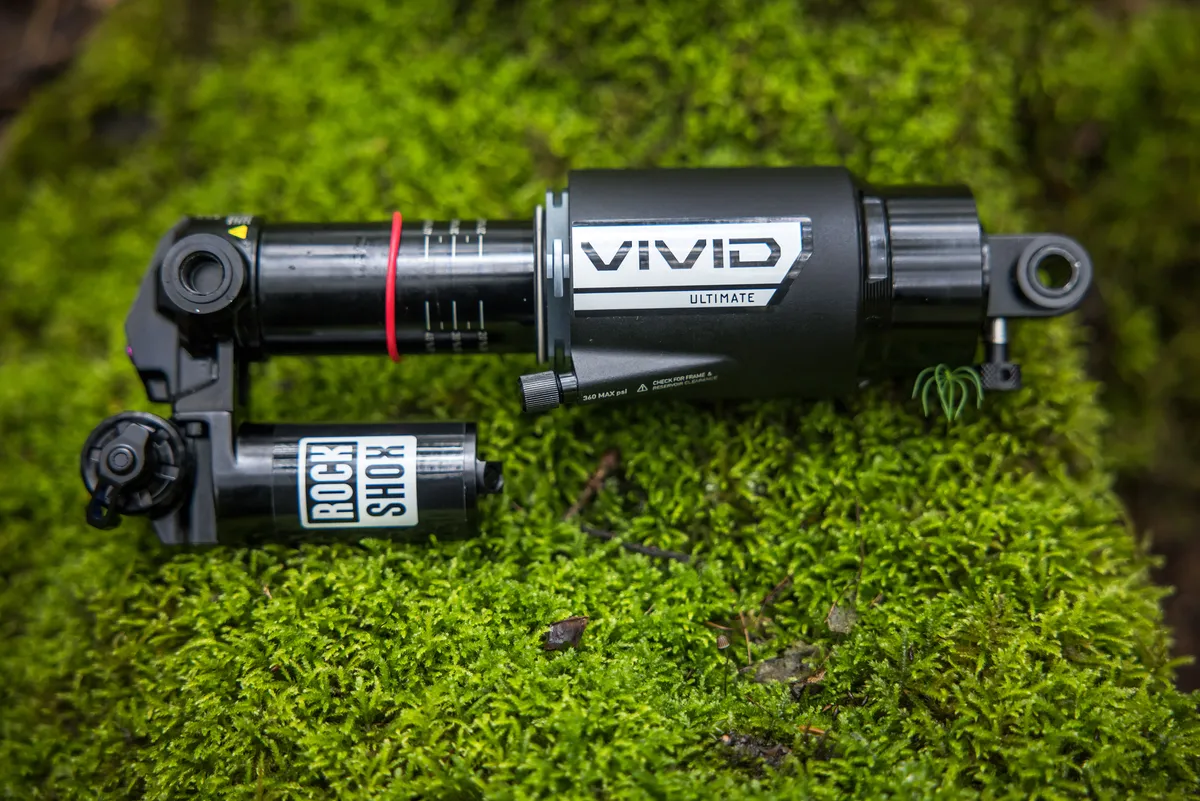
Complementing the new damper tech is an up-sized DebonAir air spring.
By increasing its air volume, RockShox has created a more linear spring rate, closely reflecting the linear rate of progression seen in coil springs.
Thanks to the air-spring design, bottom-out adjustability is retained; installing more volume-reducer spacers will increase the forces required to compress the shock at the end of its travel.
In the below graph, the grey dotted line represents a coil spring, while the coloured lines are the new Vivid air with different numbers of volume-reducer spacers.
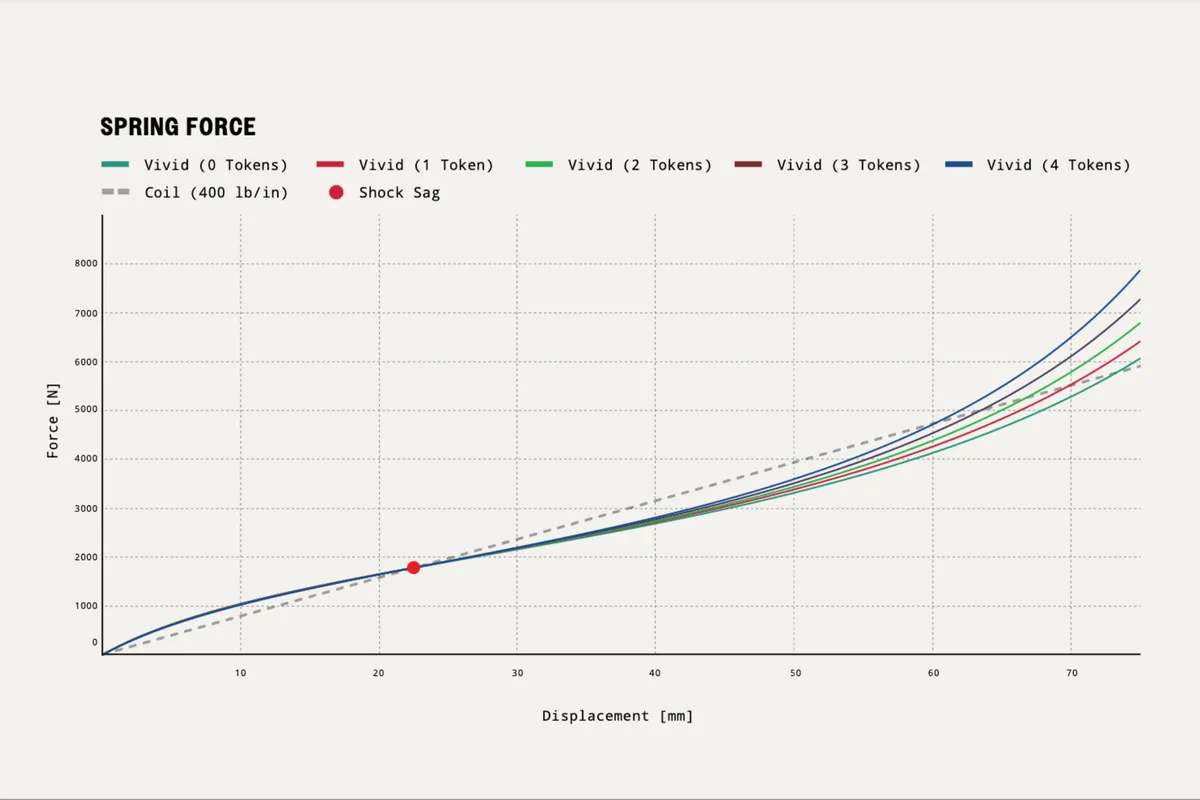
Note how close the coloured lines are to the dotted one, until the shock gets close to bottom out, where they slope upwards.
RockShox has also moved the positive and negative spring chamber equalisation port deeper into the shock’s stroke.
The negative spring’s job is to ‘suck’ the shock into its travel, encouraging it to compress more easily.
The Vivid’s port location means the negative spring pressure is going to be higher compared to designs with the port higher in the shock's stroke.
This should help the shock compress into its travel more readily because the pressure in the negative chamber is going to be higher than the positive one at full travel, and until the equalisation port is opened.
Extended service intervals
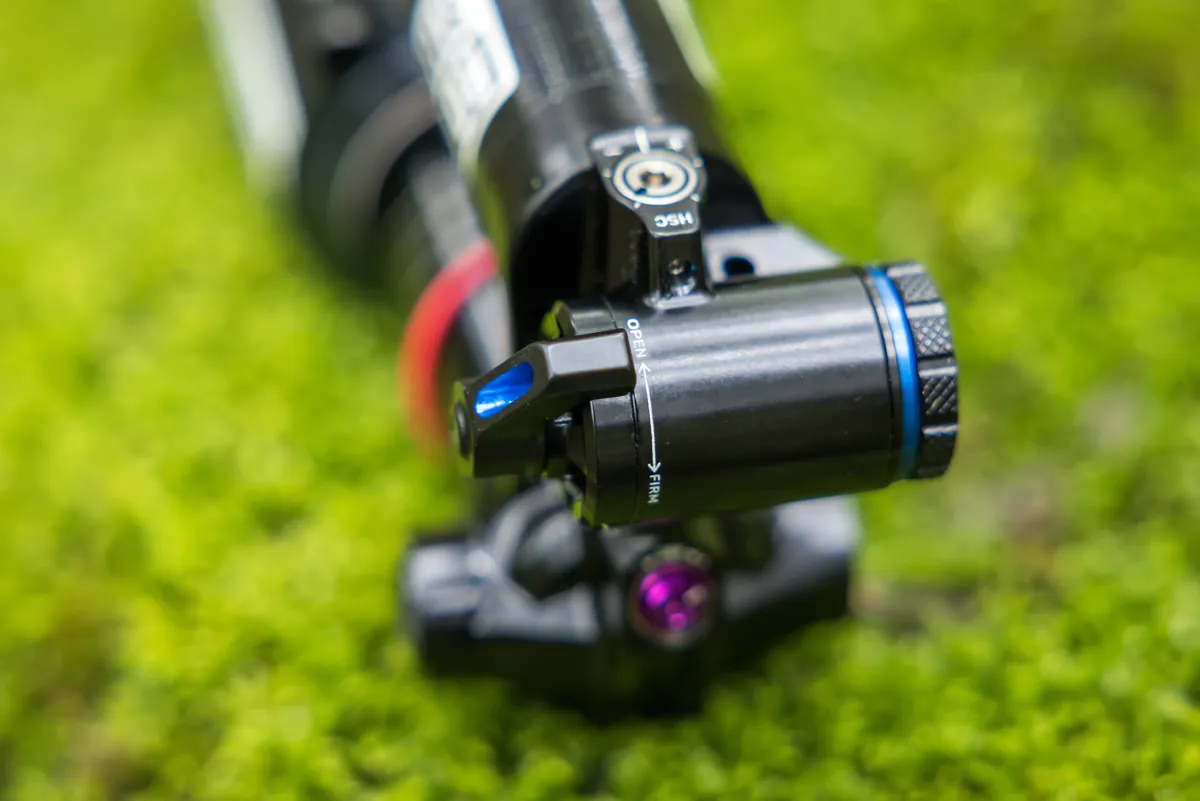
Thanks to a new wiper seal design, higher oil volumes and Maxima’s Plush Dynamic Suspension Lube – that’s now used in all of RockShox’s forks and shocks – the brand quotes a 100-hour service interval. This is double the 50-hour timeframe on the Super Deluxe shocks.
Ultimate-level upgrades
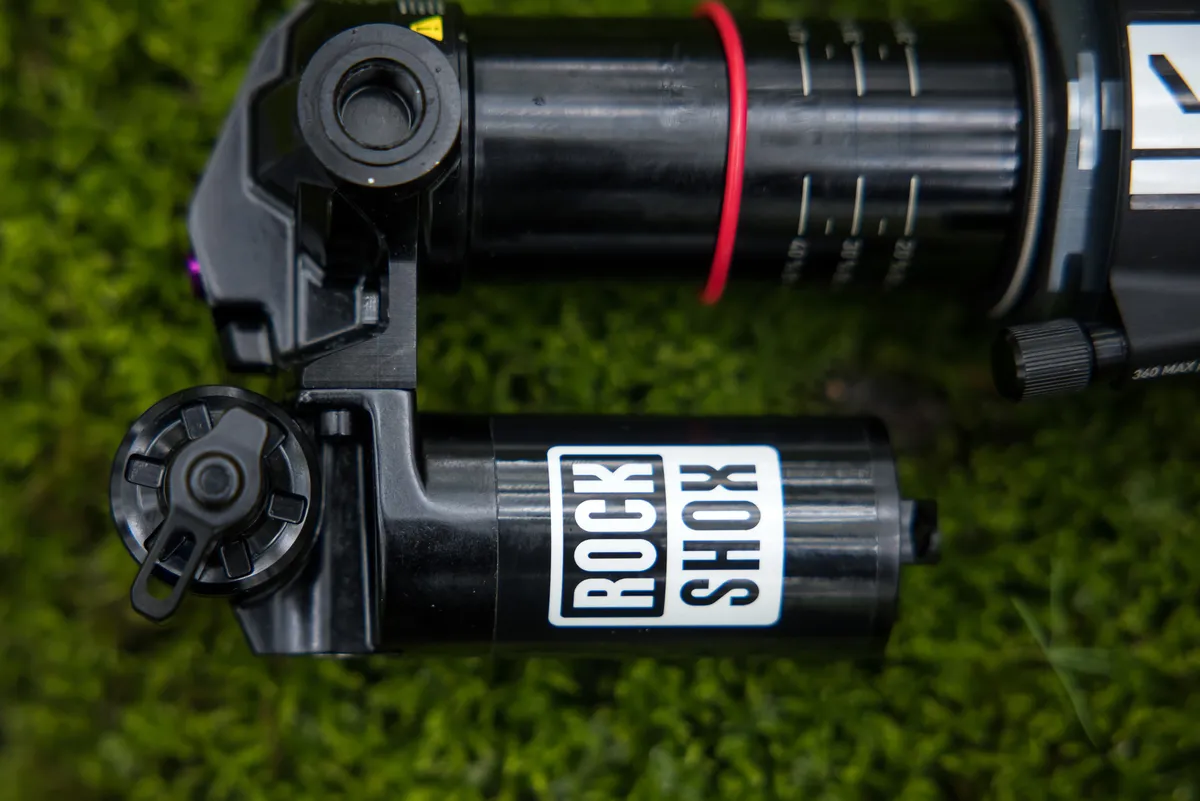
Select , Select and Vivid models all feature adjustable hydraulic bottom out, but can be upgraded with the Ultimate-level reservoir to increase adjustability.
Adding low- and high-speed compression adjustment, the bolt-on reservoir upgrade costs £220/$230/€245.
While RockShox supplies a host of instructions on how to do this upgrade yourself on the brand's website, doing so requires a full rebuild, including setting the internal floating piston’s position and bleeding the damper. Only experienced mechanics should take this job on.
Also upgradeable are Vivid’s eyelet bushings, which can be replaced with bearing hardware to help reduce friction further.
This upgrade is only compatible with 8x30mm hardware, so not all bikes will benefit. It costs £29/$30/€32.
RockShox Vivid Ultimate initial ride impressions
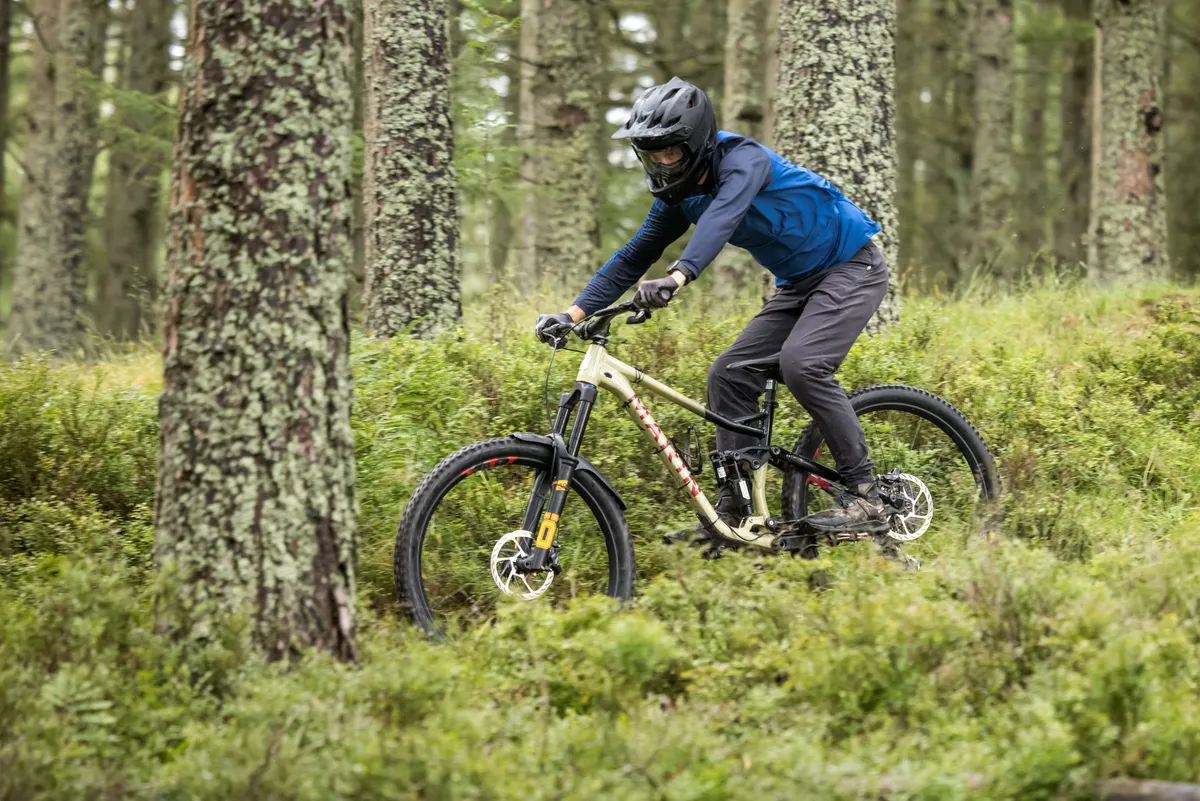
Senior technical editor Alex Evans rode the new RockShox Vivid fitted to his trusty Marin Alpine Trail XR enduro bike on his home trails in Scotland’s Tweed Valley for a few weeks prior to the launch. His initial ride impressions are below.
The metric-sized trunnion-mounted 205x65mm Vivid tipped my scales at 691g, heavier than Fox’s Float X2 Factory (trunnion, 205x65mm), which weighed 664g.
The Vivid RockShox supplied came fitted with a linear R55 rebound tune and a C30 compression tune, along with two volume-reducer spacers pre-installed. This tune, according to RockShox, is suited to the Alpine Trail XR.
Setup was relatively straightforward. For my 77kg kitted-up weight, I inflated the air spring to 178psi and left the two volume-reducer spacers installed. This gave me 29 per cent sag.
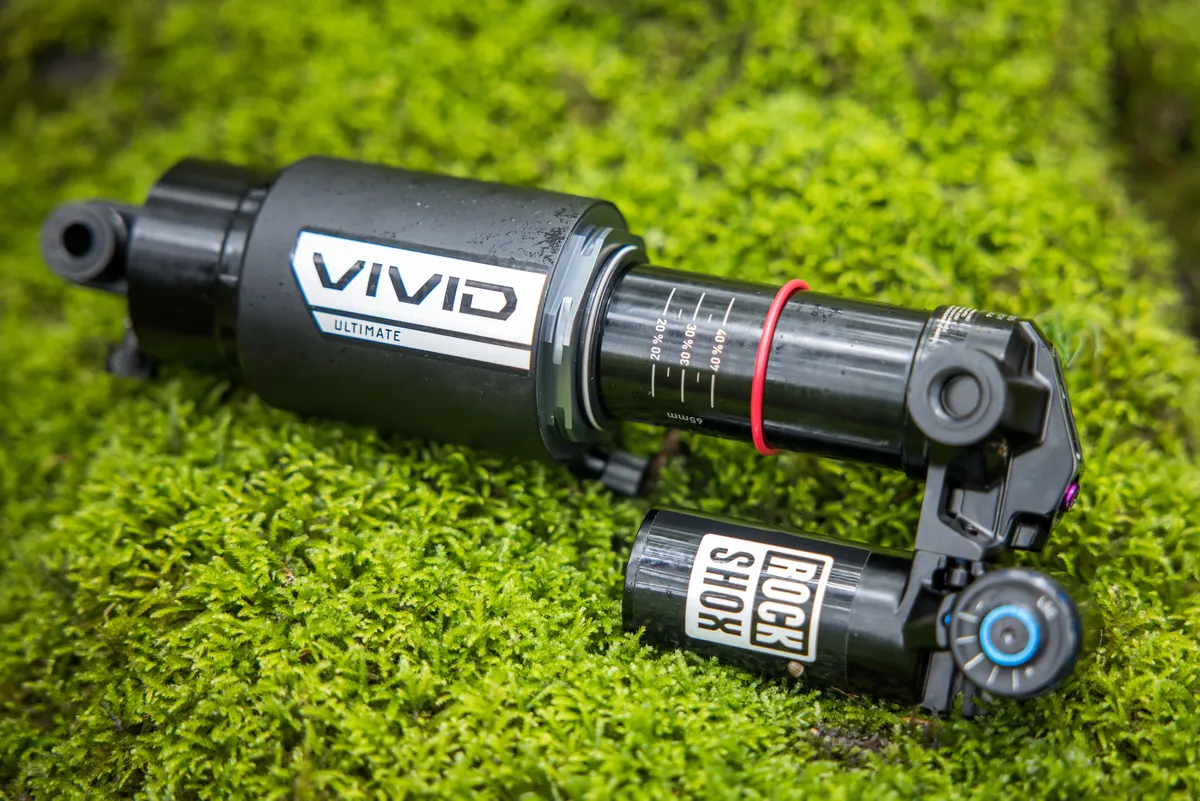
During the initial shakedown ride, I fully opened the external rebound adjustment and high-speed compression adjustment. I ended up with 1 click (from fully open) of low-speed compression damping and 1 click (from fully open) of hydraulic bottom out.
While I felt satisfied these settings provided the performance I was after, they indicate the shock’s rebound and/or compression tunes are too hard for my requirements.
Ideally, the rebound and compression-damping adjusters should be in the middle of their range. I have contacted RockShox to get a lighter tune installed in my Vivid so I can continue testing.
Despite the tune, out on the trail, the Vivid’s smoothness is certainly impressive.

It dips in and out of its travel with a noteworthy eagerness, providing a hushed and muted feel in rough, choppy terrain.
I was convinced my rear tyre had lost pressure, which highlights its impressive bump-devouring performance and just how smooth it feels.
The Vivid gives the bike a damped, grippy feeling, effectively flattening and filtering out the harsh spikes of repetitive bumps, something usually felt when your tyres are too soft.
Multiple factors appear to be at play here; the TouchDown tech, the high-volume positive and negative spring chambers, and the spring’s linear design combine to create plenty of smoothness.
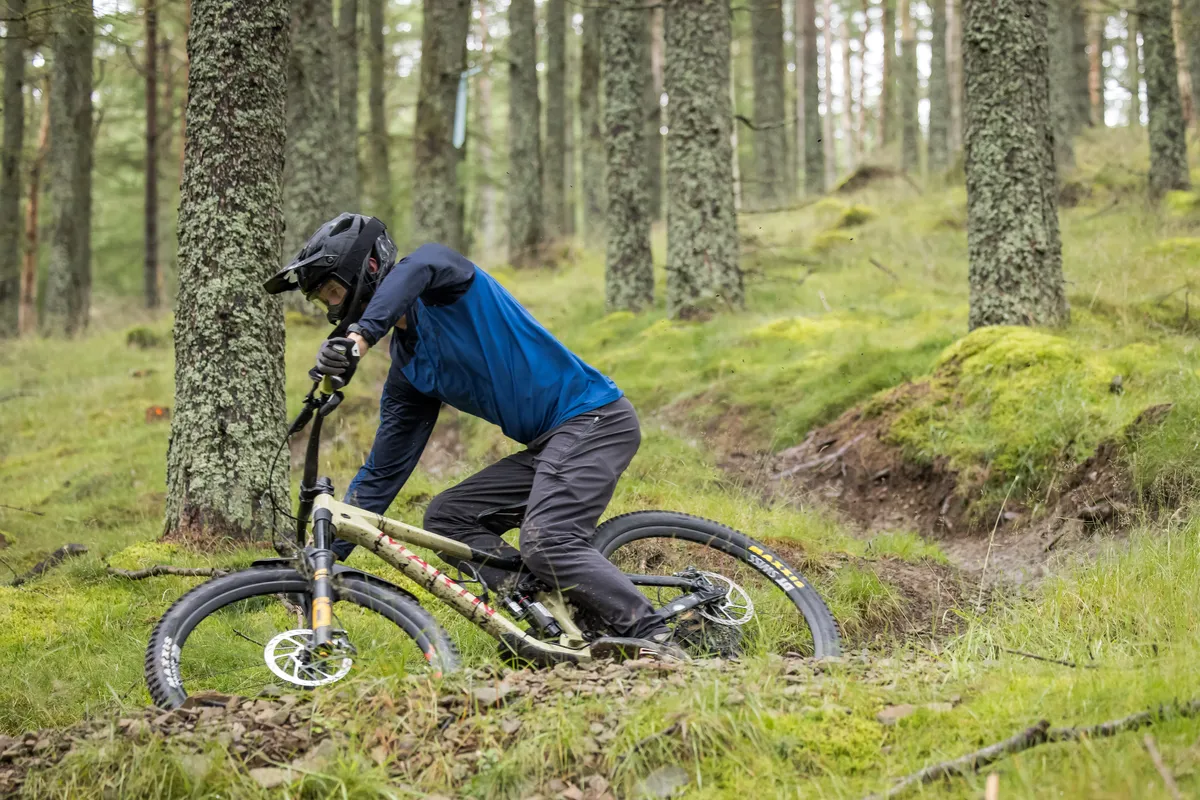
Despite the spring’s linear feel, the damping provides ample mid-stroke support to stop the bike sinking too deep into its travel in high-load berms or compressions.
The end-stroke ramp-up – thanks to the volume-reducer spacers – and hydraulic bottom out both help the Alpine Trail XR use full travel softly, rather than with a harsh stop.
Initial impressions indicate the Vivid is an impressive performer with plenty of scope to tune it to feel like a coil-sprung shock, a traditional air-sprung shock or anything in between.
TouchDown’s effect is subtle and hard to distinguish on its own because the large air spring will be helping improve off-the-top smoothness compared to a smaller one.
Additionally, the harder than ideal tune could be playing a role in muting its performance.
Be sure to stay tuned for a full review once I’ve had the damper re-tuned and spent more time on the shock.
RockShox Vivid rear shock models and prices
RockShox Vivid Ultimate
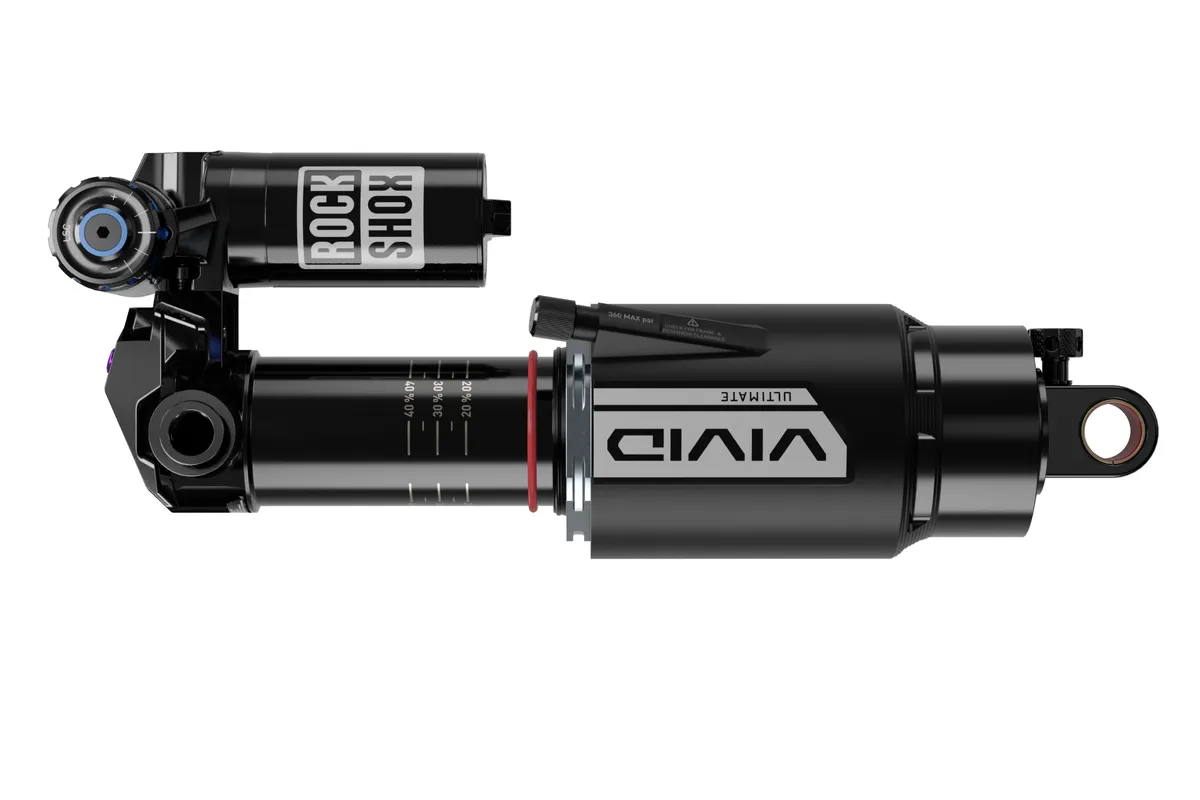
- Damper: TouchDown RC2T
- Adjustments: Low- and high-speed compression, low-speed rebound, hydraulic bottom out, threshold lever
- Air spring: Vivid DebonAir
- Price: £749/$699/€839 – £799/$729/€874
RockShox Vivid Ultimate DH

- Damper: TouchDown RC2T
- Adjustments: Low- and high-speed compression, low-speed rebound, hydraulic bottom out,
- Air spring: Vivid DebonAir
- Price: £749/$699/€839 – £799/$729/€874
RockShox Vivid Select
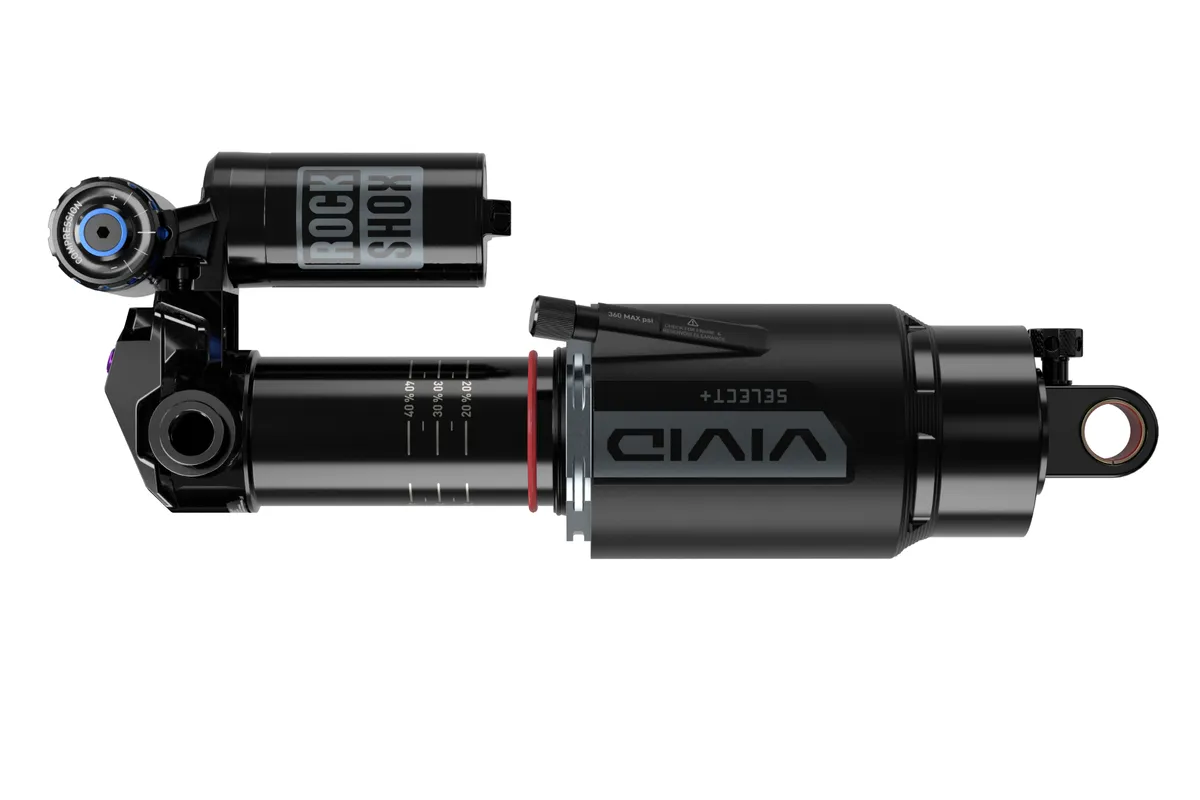
- Damper: TouchDown RCT
- Adjustments: Low- and high-speed compression via a single adjuster, low-speed rebound, hydraulic bottom out, threshold lever
- Air spring: Vivid DebonAir
- Price: OE only
RockShox Vivid Select
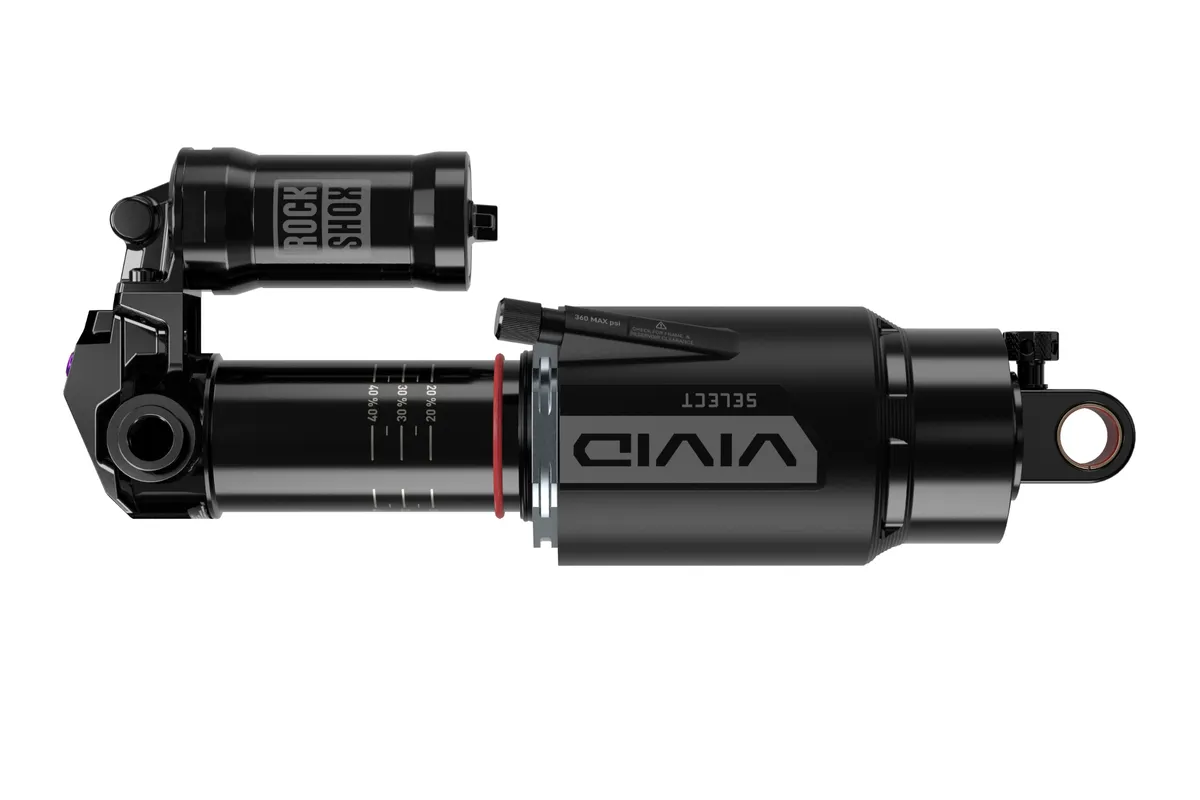
- Damper: TouchDown RT
- Adjustments: Low-speed rebound, hydraulic bottom out, threshold lever
- Air spring: Vivid DebonAir
- Price: OE only
RockShox Vivid
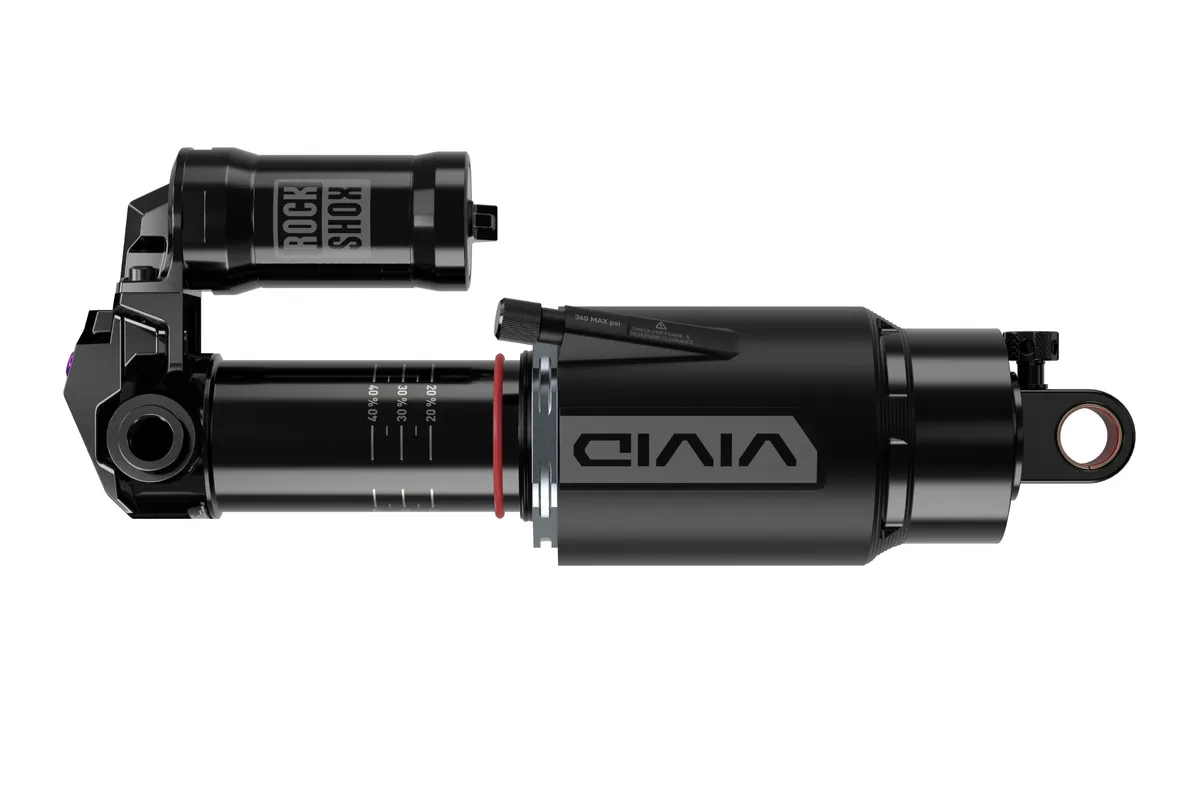
- Damper: TouchDown R
- Adjustments: Low-speed rebound, hydraulic bottom out
- Air spring: Vivid DebonAir
- Price: OE only
